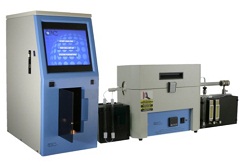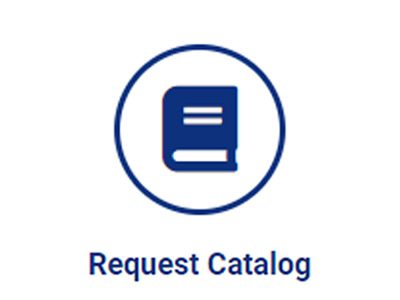DETERMINATION OF ORGANIC & TOTAL CARBON IN SOLIDS AND SEDIMENTS AND ON SUBTRATES, INCLUDING CATALYSTS
PRINCIPLES OF OPERATION
Samples are combusted in an oxygen atmosphere to convert organic and inorganic forms of carbon to CO2. The combustion temperature is selected (up to 1200˚C) either to completely oxidize all carbon forms or to selectively oxidize only the organic carbon forms. The combustion product gases are swept through barium chromate catalyst/scrubber to ensure that all of the carbon is oxidized to CO2. Other potentially interfering product gases such as SO2,SO3, HX and NOX are removed from the gas stream in a series of chemical scrubbers. The carbon dioxide is then swept to the CO2 Coulometer where it is automatically measured by coulometric titration.
PROCEDURE
- Assemble and prepare the components for operation as described in the Instruction Manuals.
- Determine the blank and run a standard to confirm proper operation of the complete system.
- Weigh a sample into a combustion boat (platinum boats are supplied with the system) and place the boat in the ladle.
Note: The sample size should be selected so the sample contains 1000 – 3000 µg of carbon. Sample weights can range from a few milligrams to several grams. Sample sizes containing above 5 – 10 milligrams of carbon are not recommended for combustion type analysis because of high system pressures.
- Place the ladle in the unheated portion of the combustion tube and seal the system. Allow the system to purge for approximately one (1) minute before beginning the analysis.
- Move the ladle into the combustion zone.
- When all of the CO2 is evolved and titrated, the CM5017 automatically detects the endpoint, ends the analysis and prints the result to the printer and/or diskette. *
(*) – Endpoint determination and result calculations are performed automatically based on user selectable settings entered into the CM5017 CO2 Coulometer.
RESULTS
If sufficient sample has been used to evolve over 1000 ug carbon, the titration accuracy is better than +/ – 0.15% relative. Overall accuracy then is typically +/-0.3%. When sample availability, volume or reactivity limits the amount of CO2 evolved to small amounts, the accuracy will be dependent upon sample homogeneity and handling consistency.
NOTES
The UIC, Inc. instrument design is flexible to permit adaptation for special requirements.
Normal scrubbers remove sulphur oxides, nitrogen oxides and acid halides efficiently enough to analyse carbon in sulphur and mineral acids. Special scrubber or high capacity scrubbers and tube fillings can be added if needed.
Sample handling provisions are available for samples weighing up to 2-3 grams without major modifications. Special modifications for larger sample sizes can be customized for specific needs. Contact the UIC, Inc. Applications Laboratory for details.
See CAN-6 for more detailed information on the determination of carbon in sulphur and CAN-12 on volatile sample handling.





